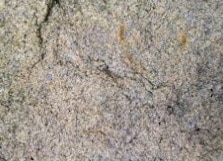The etymological origin of the term granite is found in Latin. Specifically, we can establish that it is the result of the sum of two lexical components of said language:
-The noun “granum”, which can be translated as “seed”.
-The suffix “-ito”, which is used as a diminutive.
However, we must keep in mind that we are going to find two different meanings of that term.
Thus, the term granite refers to a rock that is formed with mica , quartz and feldspar , three types of minerals. Granite is hard and compact and, depending on the proportion of its different components, it can take on different shades.
 The formation of granite occurs from the cooling and solidification of magma : that is why it is an igneous rock . Since this cooling takes place below the surface and slowly, granite is also classified as an intrusive or plutonic rock .
The formation of granite occurs from the cooling and solidification of magma : that is why it is an igneous rock . Since this cooling takes place below the surface and slowly, granite is also classified as an intrusive or plutonic rock .
Due to its resistance and tenacity, granite began to be used thousands of years ago in construction. In Ancient Egypt , this material was used to create vessels, containers, monoliths and columns.
Currently granite is often used to cover monuments and public buildings. It is also used in the foundations and development of breakwaters, dams and reservoirs.
In addition to all of the above, we must not forget the fact that granite is such a widely used material because it has a series of notable advantages, among which are the following:
-It is very resistant to stains.
-It manages to keep its color intact at all times like the first day. This is due to the fact that it offers significant resistance to UV radiation.
-It is very versatile and can be used to shape both kitchen countertops and floors or facades for a home, among other things.
-It can be found in different finishes, textures and even colors.
-It must also be emphasized that granite is not a flammable material.
-Keeping it in perfect condition is something very simple to do and hardly requires any expenses.
It is also interesting to know that granite is currently a material that, as we have mentioned, can be found in a wide variety of finishes. However, among the most significant are sandblasting, sawing, flaming, beaking, polishing or grooving, for example.
It should be noted that the notion of granite can also be used as a diminutive of grain . For example: “To make a castle, you must first fill your bucket with grains of wet sand,” “I like the texture of the grains of salt in the food,” “I added a few grains of mustard to give it more flavor.” ” .
A pimple, in this context, can be a lump that appears on the face or body, often containing pus inside. The chronic disease that is characterized by the appearance of pimples, pustules and papules is called acne .
These efflorescences can appear due to an infection, an allergy or an illness , among other reasons. Pimples, in addition to causing physical consequences, can affect self-esteem since they alter personal aesthetics.
